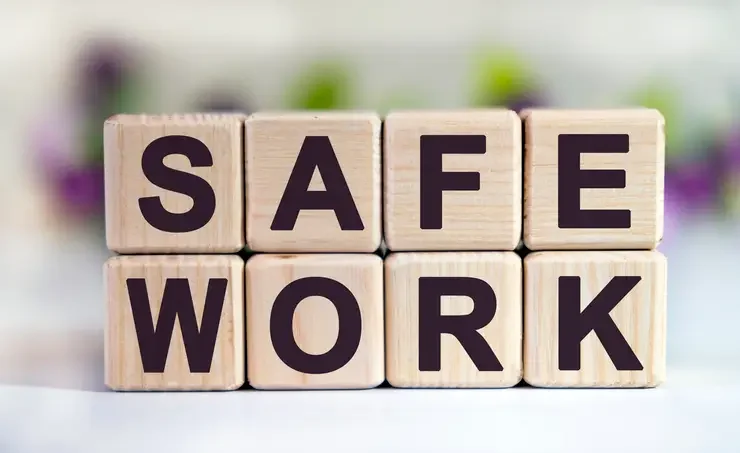Navigating the 360-degree Terrain: OSHA 30 Curriculum deep dive
In the world of occupational health and safety, knowing and applying the safety practices is not only compulsory but it is also a must for the safety and health of workers. The OSHA 30-hour training program presents a comprehensive approach to the subject involving all 360-degree dimensions.
The 30-hour training program by the Occupational Safety and Health Administration (OSHA) is detailed but effective. It is aimed at arming workers and supervisors alike with the necessary knowledge and skills required to create safe workplaces.
In this article, you’ll receive a thorough 360-degree view of the OSHA 30 course, including its components, advantages, and why this element is essential for workplace safety.
Understanding OSHA 30: A 360 Degree Commitment to Safety

The OSHA 30-hour safety training course is a starting point for the ultimate understanding of workplace safety. It gives you a 360-degree view of the policies, procedures, and practices employed to secure your workers.
The training is split into two primary sectors: Construction and General Industry, each caters to the different nature of hazards and safety regulations in these workplaces.
The OSHA 30 training course covers all important safety issues including fall protection and information about electric hazards and personal protective equipment.
Each subject is considered in a variety of other ways thus giving the learners a 360-degree view of different safety risks in any work setting. The employees and employers will enjoy all the benefits of the course from the OSHA 30-hour training in their professional careers.
This makes sure that both the employer and the employee are given a 360 overview and understanding of workplace safety.
For Workers: Helping them Empower in the Workplace

The employees form the pillars of industries and, therefore, their safety is fundamental for the effective running of day-to-day activities.
The essence of the OSHA 30-hour course lies in equipping the workers with a completely different viewpoint and a 360 degree knowledge on workplace safety and health. We will take a look at how workers can use this knowledge for the benefit of themselves and their fellow workers, thus making the working environment safe.
Hazard Recognition:
First, the course gives workers hands-on 360 experience in recognizing dangers and, in turn, keeping them safe from workplace hazards. This is not only concerned with visible risks but goes more than just that into the subtle aspects of workplace hazards.
Workers can pick up safety measures that may not be visible at the time, like chemical exposures and ergonomic threats, thus ensuring a broad and 360 approach to hazard identification.
Implementing Preventive Measures:
Hazard awareness is another critical step. The OSHA 30-hour training program provides workers with more information regarding the application of aspects of preventive measures. This includes understanding the wearing of PPE (Personal Protective Equipment), the use of the right signage, and the use of safety protocols among others.
The employees obtain the necessary skills not only for working in a safe spot but also to put efforts into protection and self-development. Giving a more 360-degree overview of preventive measures.
Awareness About Rights:
A good deal of the program is devoted to training workers on their rights and obligations about safety and health issues in the workplace. This is another example of the 360-degree overview that OSHA 30 provides.
This is valuable information that can help workers to be empowered and thus be able to voice their safety concerns and those of others. Knowledge of the legal aspects of workplace safety, including the right to refuse a job that appears to be unsafe, and the procedures for reporting unsafe conditions is vital.
This aspect of the training ensures that workers do not just view safety as the thing they are supposed to passively take part in, but rather as a behavior that they need to actively promote.
For Employers: Creating a 360-degree Elevated Safety Culture

The employers stand as the sole entity to decide what a workplace-safe environment would be like. With the OSHA 30-hour course, they get a powerful 360 degree full scope on safety and can maintain a safety-first culture in which everything else is aligned through all their operations.
Here’s a more detailed exploration of how employers can use the OSHA 30-hour course to enhance workplace safety: Here’s a more detailed 360 overview of how employers can use the OSHA 30-hour course to enhance workplace safety:
Comprehensive Risk Assessment:
Reliable risk assessment can be done by supervisors who have OSHA 30 certification. Therefore, the investors will be building their own set of measurement units knowing the full field of risks since they are given 360 insight information.
Moreover, this assessment ensures that nothing is missed by identifying hazards in this procedure because it is a checklist of the whole activity.
Creating Customised Safety Programs:
With a 360-degree comprehension of the risk matrix in the area of operation, businesses can make proposed changes in their safety operation to mitigate identified risks.
Training can be done in different directions, such as safety training of special standards and emergency plans taking into account the features of the workplace.
Safety First Culture:
The OSHA 30-hour training modules are designed to help companies foster a culture of safety within their organization. Such measures are normalising safe behaviour, initiating open discussions on safety issues and finally consciously praising good deeds.
The main goal of the training is to help companies on how to safely attend to their employees’ welfare and consider it as a group effort. It refers to a 360-degree approach to work safety.
Overall Benefits of the OSHA 30 Course:
As for the integration of the OSHA 30-hour course and the 360-degree approach to safety, this method brings plenty of benefits to both workers and employers.
Here are some of the key benefits:
Reduced Workplace Accidents:
In 2020, around 4764 construction workers died due to workplace accidents in the construction industry.
Through the OSHA 30 and 360 approach, these respective programs create a strong foundation among workers.
It focuses on identifying the various occupational risks, hazards, and safety practices. Due to this, workplace accidents can be reduced to a great extent.
Increased Productivity:
Safe working conditions uplift the spirit of workers and thus, they are motivated to get more tasks accomplished, as they operate purposefully and are less likely to be hurt.
Cost Savings:
OSHA estimated that US companies paid almost $1 BIllion per week in compensation to employees for their injuries.
The introduction of safety practices discovered while taking the OSHA 30 course can cause substantial cost savings based on the decrease of expenses related to the accidents that happen at the workplace, such as medical expenses and time of downtime.
Enhanced Reputation:
Organizations which set safety at the top of their priorities are viewed with high regard among their clients, partners and potential employees too, which helps in building their reputation in the market and gaining a competitive edge.
Legal Compliance:
OSHA 30 will assist in keeping employers and employees compliant with OSHA regulations. Overall reducing the probability of such legal actions related to safety in workplaces as fines can range from $14,502 to $145,027 per violation.
Conclusion
Safety should be an ongoing, 360-degree commitment. The 30-hour training programme demonstrates OHSA’s 360-degree dedication, which includes comprehensive teaching on workplace dangers and preventative strategies.
Adopting this curriculum, on the other hand, assists organizations in developing a strong safety culture that goes beyond simply complying with rules by viewing their employees as their most precious asset.
While the way to meeting OSHA 30’s workplace safety mandate is filled with hurdles, this course should serve as a compass, a dependable instrument that will guide us to a better and more secure environment for everybody.





